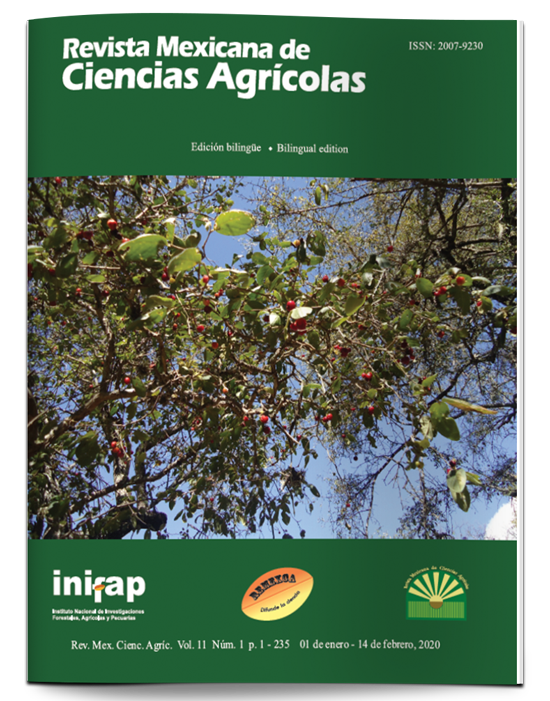Vanilla (Vanilla planifolia) production in Mexico: analysis and forecast
DOI:
https://doi.org/10.29312/remexca.v11i1.2065Keywords:
Box - Jenkins methodology, ARIMA models, orchid, agricultural planning, predictionAbstract
Vanilla (Vanilla planifolia) is one of the most demanded aromatics in the culinary and soft drink industry, and among licit crops it is the most profitable, only after saffron. In 2017, production in Mexico was 505.32 tons, placing it as the fourth largest producer in the world after Madagascar, Indonesia and China. The objective of this study was to develop a forecast model for annual vanilla production in Mexico (PVAINI). The data were from the period 2000 to 2016 and the Box-Jenkins methodology of integrated autoregressive processes of moving averages (ARIMA) was used. The model parameters were estimated using the maximum likelihood method with the Statistical Analysis System computer package. A model based on the PVAINI series was adapted for the period 2000 to 2016 and validated with the data for the years 2016 and 2017. The best estimated model was ARIMA (1, 1, 1) and indicated that the PVAINI are explained with the production occurred 4 previous years. The predicted values for 2017 were close to the observed values. The ARIMA model represented PVAINI with some precision in the next year and provided information to plan and make decisions for the next six years.
Downloads
Published
How to Cite
Issue
Section
License
The authors who publish in Revista Mexicana de Ciencias Agrícolas accept the following conditions:
In accordance with copyright laws, Revista Mexicana de Ciencias Agrícolas recognizes and respects the authors’ moral right and ownership of property rights which will be transferred to the journal for dissemination in open access. Invariably, all the authors have to sign a letter of transfer of property rights and of originality of the article to Instituto Nacional de Investigaciones Forestales, Agrícolas y Pecuarias (INIFAP) [National Institute of Forestry, Agricultural and Livestock Research]. The author(s) must pay a fee for the reception of articles before proceeding to editorial review.
All the texts published by Revista Mexicana de Ciencias Agrícolas —with no exception— are distributed under a Creative Commons License Attribution-NonCommercial 4.0 International (CC BY-NC 4.0), which allows third parties to use the publication as long as the work’s authorship and its first publication in this journal are mentioned.
The author(s) can enter into independent and additional contractual agreements for the nonexclusive distribution of the version of the article published in Revista Mexicana de Ciencias Agrícolas (for example include it into an institutional repository or publish it in a book) as long as it is clearly and explicitly indicated that the work was published for the first time in Revista Mexicana de Ciencias Agrícolas.
For all the above, the authors shall send the Letter-transfer of Property Rights for the first publication duly filled in and signed by the author(s). This form must be sent as a PDF file to: revista_atm@yahoo.com.mx; cienciasagricola@inifap.gob.mx; remexca2017@gmail.
This work is licensed under a Creative Commons Attribution-Noncommercial 4.0 International license.



